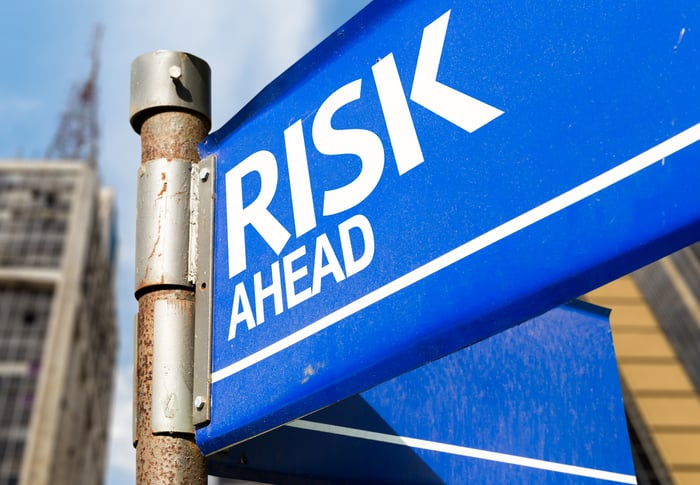Dividend stocks are often the foundation on which the greatest investing and retirement portfolios are built. And there's a good reason for that: They present a myriad of advantages over companies that don't share a percentage of their profits with shareholders.
Three big advantages of dividend stocks
To begin with, dividend stocks are often a beacon of profitability. Companies probably wouldn't choose to share a percentage of their profits with investors on a recurring basis if they didn't believe those profits were sustainable. Thus, a dividend payment (and especially dividend growth over time) serves as something of fishing hook to lure in income-seeking investors.

Image source: Getty Images.
Second, dividend stocks can help hedge against the inevitable downward movements in the stock market. The broad-based S&P 500 (^GSPC 1.67%) has had 35 corrections totaling at least 10% since 1950, when rounded to the nearest whole number. While dividend income is unlikely to completely eliminate the often short-term pain of a stock market correction, it certainly helps to alleviate some of the sting.
Finally, and perhaps most importantly, dividend stocks allow shareholders to grow their wealth through a process known as compounding. Instead of simply pocketing a dividend payout, shareholders have the opportunity of repurchasing more shares of common stock through a dividend reinvestment plan, more commonly referred to as a DRIP. DRIPs usually have no commission attached, sometimes allow for fractional share purchases, and increase your stake of ownership such that you receive a bigger payout and thus more shares of stock, in a repeating pattern. It's a trick that some of the smartest money managers use for their clients to generate wealth.
The irony behind dividend stocks
Generally speaking, income investors want to buy into companies with the highest yields possible. But dividend stocks also hold an ironic and somewhat dark truth: The higher the yield, the greater the risk for disappointment.
Dividend yields are ultimately just a function of a company's share price. Dividend yields don't tell us a whole lot about the quality of the dividend (i.e., if it's sustainable) or the earnings power behind the dividend. If a company has a failing or struggling business model and its share price falls considerably, it could artificially inflate the dividend yield and make it appear far more tempting than it should be. In simpler terms, the higher the yield, the more likely you could be falling into a high-yield dividend trap.

Are you chasing a high-yield dividend trap? Image source: Getty Images.
Admittedly, not all high-yield dividend stocks are necessarily bad news. The company structure of real estate investment trusts (REITs) ensures that they pay out at least 90% of their earnings in the form of a dividend in order to receive hefty tax breaks. This means REITs, limited partnerships, and other specialized tax structures can offer substantially higher-than-average dividend yields (the average yield of the S&P 500 is around 2%) and have them be remarkably sustainable.
However, the data is pretty clear that high-yield dividend stocks are nowhere near as sure a thing as you'd be led to believe.
High-yield dividend stocks are often a trap, data shows
According to data released last summer by Mellon Capital, the realized dividend yield of high-yield S&P 500 dividend stocks between 1996 and 2015 was often much lower than investors had been expected. According to Mellon Capital and FactSet Research Systems' data, S&P 500 stocks with an average yield of greater than 16% had a realized dividend yield of just over 3% when all was said and done. In other words, these payouts weren't very sustainable, and in many cases they were cut considerably. In fact, S&P 500 companies with a forecasted yield of 3% to 4% had realized yields that topped those with forecast yields of 16%-plus. Overall, the gap between realized dividend yields and forecast yields widened with every 1% step up in yields beginning at the 4% to 5% category.
In short, if it seems too good to be true when it comes to a dividend yield, it very well might be.

Image source: Getty Images.
For instance, telecom company Frontier Communications (FTR) is sporting a 17% dividend yield within the S&P 500. If this were somehow sustainable, investors would be able to double their money on dividend income alone in less than five years.
However, this ridiculously high yield masks the underlying problems Frontier is contending with. Frontier has on a few occasions acquired wireline assets from Verizon over the past decade. Though these tend to be higher-margin assets, they also represent a decaying technology given the proliferation of wireless connectivity. As such, Frontier has been facing a quarterly exodus of customers for years. Between its high debt levels and recently disappointing earnings results, it's looking like only a matter of time before Frontier cuts its dividend. And just to make matters worse, its share price is down by 55% over the trailing year, meaning its 17% yield isn't doing a whole lot to stem the share-price losses tied to the underlying issues in the company.
Your best bet when looking for dividend income is to find a stable company that appears to be valued at a discount. High-yield dividend stocks can be a plus for your income portfolio, but only after they've passed a pretty rigorous sniff test that you conduct!




